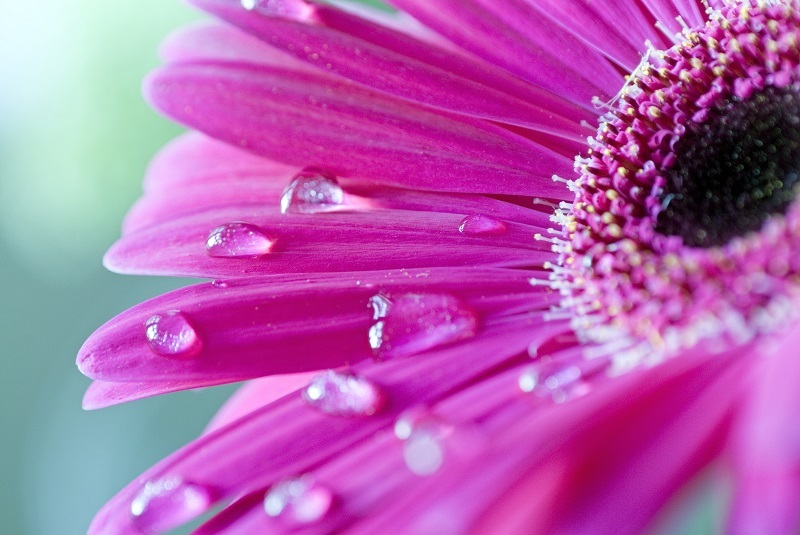Flourishing Hydrangeas: Essential Care Guidelines
Posted on 01/07/2025
Flourishing Hydrangeas: Essential Care Guidelines
Hydrangeas are beloved for their lush blooms, dazzling color variations, and elegant presence in gardens around the world. Whether you are planting your first shrub or aiming to achieve stunning summer displays, understanding proper hydrangea care is key. This comprehensive guide delves into essential guidelines and expert tips to ensure your hydrangeas not only survive--but truly flourish.
Understanding Hydrangeas: Types & Characteristics
Before diving into care techniques, it's vital to recognize the different types of hydrangeas. Each variety has its own unique requirements and visual appeal.
Popular Hydrangea Varieties
- Hydrangea macrophylla (Bigleaf Hydrangea): Famous for mophead and lacecap flowers, and their color-changing ability.
- Hydrangea paniculata (Panicle Hydrangea): Noted for cone-shaped blooms that fade from white to pink.
- Hydrangea arborescens (Smooth Hydrangea): Features rounded clusters, such as the popular 'Annabelle'.
- Hydrangea quercifolia (Oakleaf Hydrangea): Unique oak-shaped leaves and showy, elongated blooms.
- Hydrangea petiolaris (Climbing Hydrangea): Vigorous climbers with lacecap flowers for vertical spaces.
Understanding your hydrangea's variety helps tailor hydrangea plant care for optimal growth and vibrancy.

Choosing the Perfect Spot For Your Hydrangeas
Site selection dramatically affects hydration, bloom size, and plant resilience. Consider these factors when choosing a location:
- Light Requirements: Most hydrangeas thrive in partial shade. Morning sun and afternoon shade is ideal, though Panicle types can withstand more direct sunlight.
- Soil Conditions: Hydrangeas prefer well-drained, moist, and organically-rich soils.
- Air Circulation: Ample airflow helps prevent fungal diseases and promotes healthy foliage.
- Protection from Harsh Elements: Shield hydrangeas from strong winds and extreme afternoon sun, especially in hotter climates.
Flourishing hydrangeas begin with proper site selection, laying the foundation for years of exquisite blooms.
Planting Hydrangeas: Step-by-Step Guide
Follow these steps to successfully plant your hydrangeas:
-
Dig a Suitable Hole:
- The hole should be twice as wide as the root ball and equally deep.
-
Amend the Soil:
- Mix in compost, peat moss, or well-rotted manure for improved nutrients and drainage.
-
Position the Plant:
- Ensure the top of the root ball sits level with the surrounding soil to prevent rot and stress.
-
Backfill & Water:
- Refill the hole, press down gently, and water thoroughly to eliminate air pockets.
-
Mulch:
- Apply a 2-3 inch layer of organic mulch to retain moisture and suppress weeds.
Planting at the correct time--preferably spring or fall--ensures less transplant shock and a healthy start for your hydrangea's growth cycle.
Watering Techniques for Thriving Hydrangeas
Consistent watering is essential for healthy, blossoming hydrangeas. Here's how to water effectively:
- Keep Soil Moist: Hydrangeas require evenly moist soil, particularly during hot or windy periods.
- Deep Watering: Give a thorough soak at the root zone 1-2 times per week, more often in arid climates.
- Avoid Overhead Watering: Water at the base to prevent leaf diseases.
- Morning Watering: Early day watering reduces evaporation and deters fungal problems.
Signs of water stress include drooping leaves and browning edges. Adequate irrigation is vital for lush hydrangea blooms and robust foliage.
Feeding: Fertilizing Your Hydrangeas for Maximum Bloom
Proper hydrangea fertilization ensures vigorous growth, healthy leaves, and outstanding flower production:
- Type of Fertilizer: A balanced, slow-release formula (like 10-10-10) is suitable for most varieties.
- Timing: Apply fertilizer in spring as new growth emerges. Avoid late summer applications to prevent frost-susceptible new shoots.
- Application Method: Follow package instructions or scatter fertilizer evenly around the dripline. Water in thoroughly.
- Leaf Yellowing? A sign of iron deficiency or excess alkaline soil, which can be corrected with specialized feeds.
Remember that over-fertilizing can reduce flower production or cause leaf burn. Regular feeding supports flourishing hydrangea plants with consistent, vibrant blooms.
Pruning Hydrangeas: Timing and Techniques
Effective pruning is essential for shaping, rejuvenating, and controlling the size of hydrangea shrubs. However, timing depends on your hydrangea variety:
When to Prune
- Bigleaf & Oakleaf Hydrangeas: Prune immediately after flowering, as they bloom on old wood (last year's stems).
- Panicle & Smooth Hydrangeas: Prune in late winter or early spring, as they bloom on new wood (current season's growth).
How to Prune Hydrangeas
- Remove dead or damaged stems at the base.
- Thin out weak or crowded growth for better air circulation.
- Shape the shrub lightly to encourage larger, fuller blooms.
Proper pruning techniques ensure your hydrangeas remain vigorous and loaded with beautiful blossoms season after season.
Controlling Hydrangea Color: Soil pH and Flower Hues
One of the most intriguing qualities of hydrangeas (especially Bigleaf types) is their ability to change flower color based on soil pH:
- Blue Flowers: Achieved with acidic soil (pH 5.2-5.5). Add aluminum sulfate or organic matter like pine needles to lower pH.
- Pink Flowers: Occur in alkaline soil (pH 6.0+). Apply garden lime to increase pH.
- White Hydrangeas: Most whites remain unaffected by soil pH.
Testing your soil annually allows you to fine-tune nutrient content and pH, yielding the exact bloom colors you desire for your landscape.
Mulching and Weed Control for Flourishing Hydrangeas
Application of mulch is crucial for hydrangea care as it conserves moisture, regulates temperature, and suppresses weeds:
- Use organic mulches: Such as shredded bark, compost, or leaf mold.
- Apply 2-3 inches deep around the base, avoiding direct contact with stems.
- Renew each spring for ongoing benefits and to refresh the garden's appearance.
Maintain an weed-free area around your hydrangeas to reduce competition for nutrients and water.
Seasonal Care For Hydrangeas
Spring Hydrangea Maintenance
- Apply fertilizer and mulch renewal.
- Inspect for winter damage and prune as needed.
- Adjust watering habits as temperatures rise.
Summer Care Tips for Hydrangeas
- Monitor soil moisture regularly, especially in drought.
- Deadhead spent blooms to encourage new flower clusters.
- Watch for pests and treat early.
Autumn and Winter Hydrangea Protection
- Cease fertilizing by late summer.
- Leave spent flower heads intact in cold regions for extra winter protection.
- Mulch heavily at the base for insulation.
Seasonal adjustments keep your hydrangeas healthy year-round, promoting spectacular growth and consistent blooms.
Common Pests and Problems in Hydrangea Care
Despite their hardiness, hydrangeas can encounter several pests and diseases:
- Pests: Look out for aphids, spider mites, and scale insects. Use insecticidal soap or horticultural oils for control.
- Diseases: Leaf spots, powdery mildew, and botrytis are common. Improve air circulation and avoid overhead watering to prevent them.
- Root Rot: Caused by poorly drained soil. Always plant hydrangeas in areas where water doesn't collect after rain.
Address these issues promptly to maintain lush, thriving hydrangea bushes with minimal setbacks.
Propagating Hydrangeas: Growing Your Collection
If you want more hydrangea plants, try these easy propagation methods:
- Stem Cuttings: In late spring or early summer, snip a 4-6" piece of new growth. Remove lower leaves, dip in rooting hormone, and plant in moist potting mix.
- Layering: Bend a low branch to the ground, wound and pin it, then cover with soil. Roots will form in a few months, after which you can cut and transplant.
Propagation allows gardeners to spread the beauty of hydrangeas throughout their landscape--or share them with friends and family.
Hydrangeas in Containers: Tips for Small-Space Gardening
Don't have garden beds? Hydrangeas grow beautifully in containers! Follow these guidelines:
- Use a large, sturdy pot with drainage holes.
- Opt for potting mix rich in organic material.
- Water more frequently, as pots dry out faster than ground soil.
- Fertilize regularly, as nutrients leach through watering.
- Shelter from winter cold and extreme summer heat.
Container gardening brings flourishing hydrangea displays to patios, balconies, and even shaded porches.

Frequently Asked Questions About Hydrangea Care
Why are my hydrangea blooms not as vibrant as expected?
Several factors impact bloom quality, such as insufficient light, improper pruning, nutrient deficiencies, and unfavorable soil pH. Review the guidelines above to correct any issues.
Can I grow hydrangeas indoors?
While hydrangeas are mainly outdoor shrubs, dwarf varieties can be grown indoors temporarily in bright indirect light and cool conditions. However, long-term success is best achieved outdoors.
Should I deadhead hydrangeas?
Deadheading--removing spent blooms--makes the shrub look tidy and can stimulate more blooms in some types, especially Bigleaf and Smooth hydrangeas.
How do I winterize hydrangeas?
Apply thick mulch around the root zone, leave spent blooms on stems, and protect from harsh winds. Potted hydrangeas can be moved to sheltered locations during severe cold.
Conclusion: Achieving Magnificent, Flourishing Hydrangeas
Growing flourishing hydrangeas need not be intimidating. With the right care--thoughtful planting, consistent watering, judicious feeding, appropriate pruning, and careful attention to potential problems--any gardener can enjoy vibrant, breathtaking hydrangea blooms year after year.
Implement these essential hydrangea care tips in your garden, and you'll reap the rewards with lacy flower heads, vivid colors, and lush foliage. Hydrangeas are a true testament to the magic of mindful gardening!







